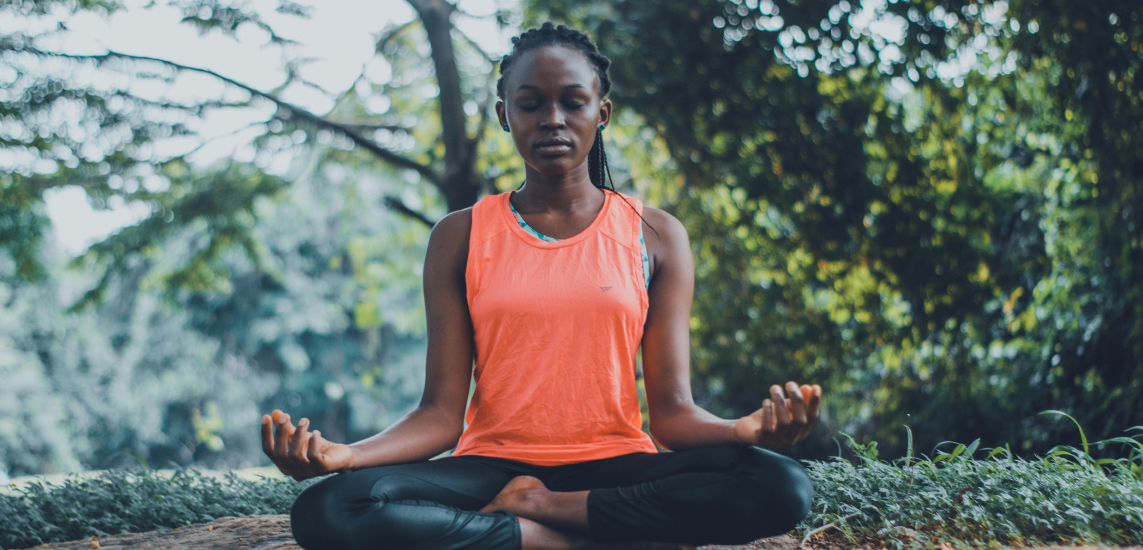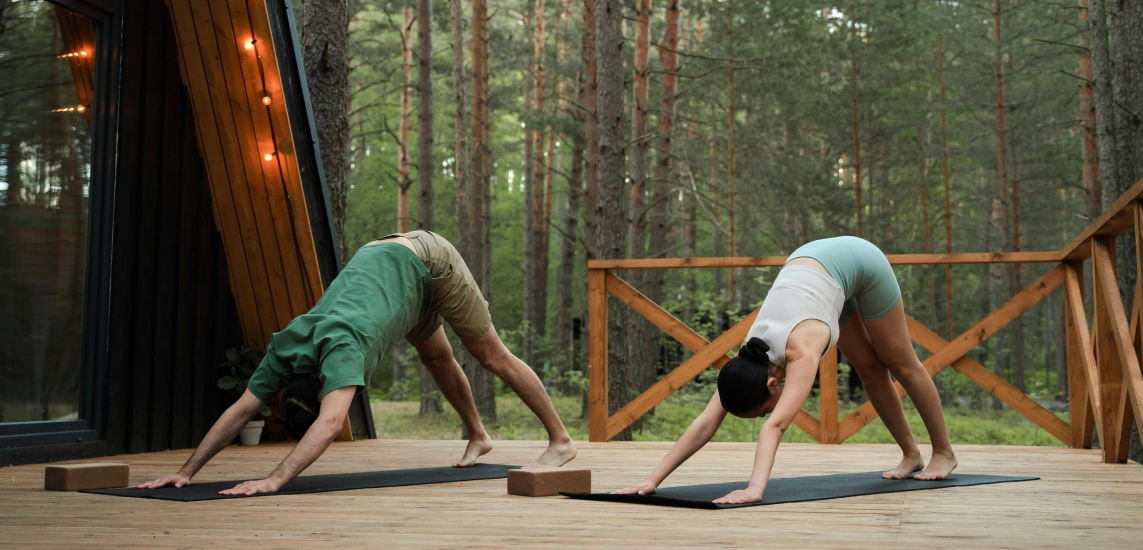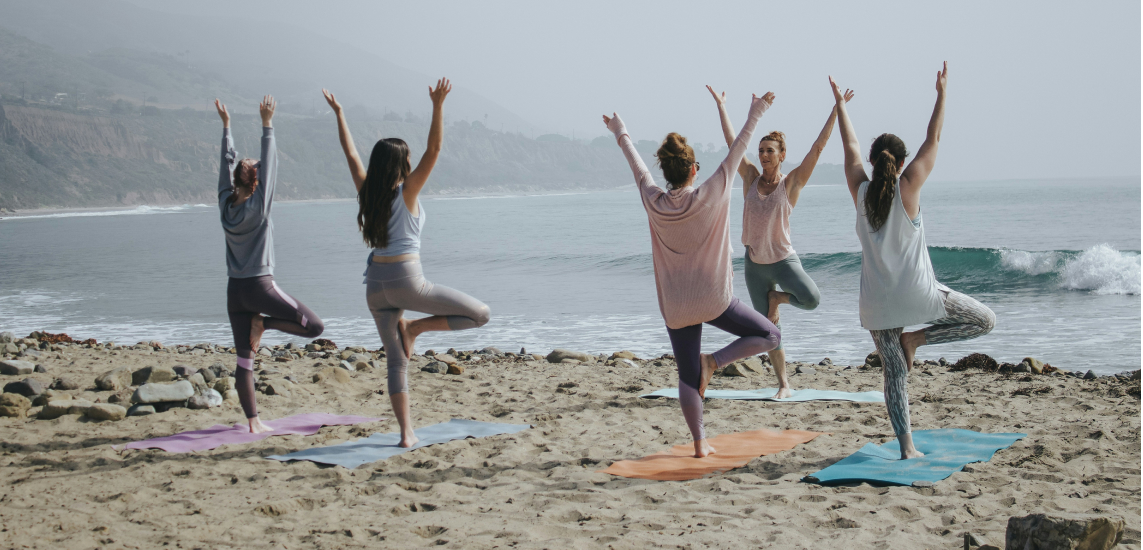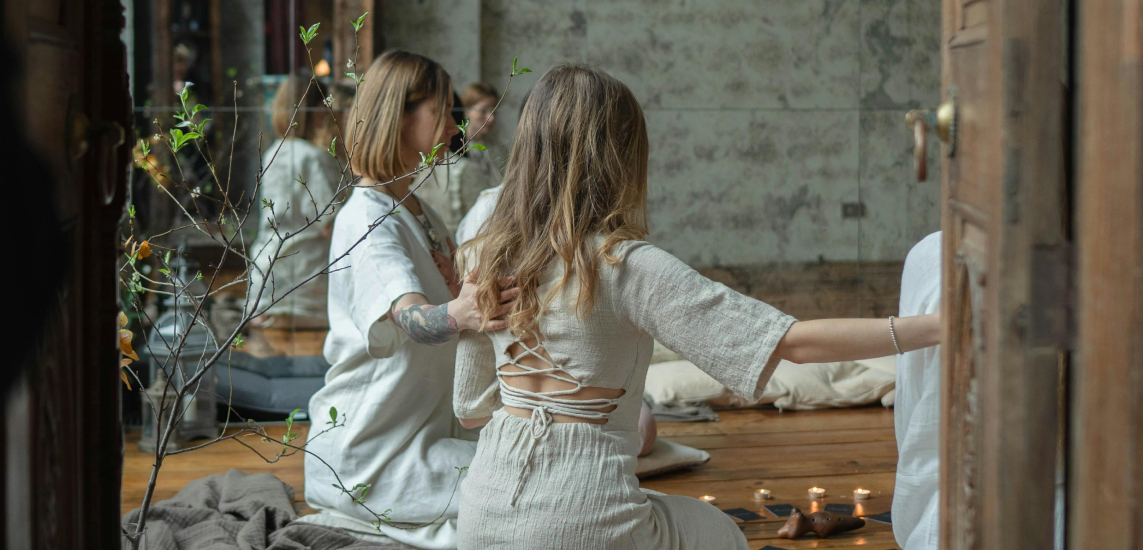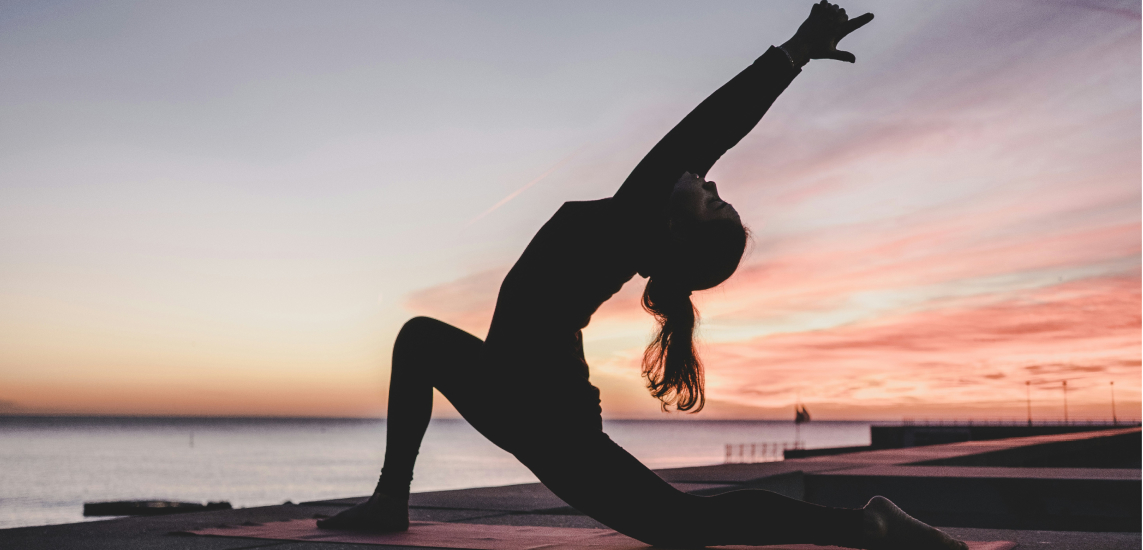This article was created using insights from Insight Timer’s meditation experts.
Returning home after your first meditation retreat can be a shock to the system. Whether you attended a vipassana retreat, a yoga and meditation retreat, or a silent meditation experience, the sense of peace and clarity you gained can feel fleeting once you’re back to juggling work, family, and other responsibilities.
The truth is that maintaining your meditation practice after a retreat isn’t always easy. Without the structured schedule of a retreat center, the guidance of a meditation teacher, or the support of like-minded people, it’s easy to lose momentum. But integrating the lessons and practices from your retreat into your daily life is possible—and deeply rewarding.
In this article, we’ll explore why it’s so hard to keep up with your practice after a retreat and share eight practical tips to help you stay connected to mindfulness. From creating a realistic routine to staying connected with your retreat community, these strategies will help you carry the benefits of your retreat into your everyday life.
Key takeaways:
- Meditation retreats are transformative but transitioning back to daily life can be challenging. Be gentle with yourself and honor the transition period as you reintegrate into your routine.
- Reflect on your retreat experience by journaling or revisiting notes. This helps you stay connected to the insights and clarity you gained.
- Build a sustainable meditation practice by starting small, setting realistic goals, and incorporating mindfulness into everyday activities like walking or eating.
- Stay connected to your retreat community and seek support from teachers or mentors to maintain accountability and motivation as you continue your mindfulness journey.
Why is it so hard to maintain a meditation practice after a retreat?
After spending days or even weeks immersed in meditation sessions or Buddhist teachings, returning to the hustle and bustle of daily life can feel jarring. The peaceful environment of a retreat center creates an ideal setting for deep practice. But once you step back into your usual routine, distractions and responsibilities quickly take over.
Some of the most common challenges people face include:
- Lack of structure: At home, you now have to carve out time for a meditation and mindfulness practice without a set schedule.
- Feeling disconnected: The contrast between the tranquility of a retreat and the chaos of your regular routine can feel discouraging.
- Post-retreat blues: Many people experience a dip in mood or motivation after leaving the retreat. This is normal but can make it harder to stay consistent.
As Emily Toner, an Insight Timer retreat host, explains:
“The first few weeks after coming back from retreat is often the hardest, and we can sometimes dip into the post-retreat blues. For this reason, I always encourage people to ‘go softly’ back into life and honor this as an important time of transition.”
Understanding these challenges is the first step to overcoming them. By acknowledging the transition and being kind to yourself, you can create a sustainable meditation practice that fits into your life.
8 tips for maintaining your practice post-meditation retreat
While post-retreat challenges are real, they don’t have to derail your practice. Here are eight practical ways to sustain your meditation practice after returning home.
Reflect on your retreat experience
Take time to journal or meditate on your retreat experience. Reflect on key lessons, moments of clarity, or emotional breakthroughs. This reflection can help you process what you learned and create a foundation for your post-retreat mindfulness practice. Here are a few ways you can incorporate reflection:
-
Write about your favorite moments, like a peaceful walking meditation or a profound insight during a guided meditation.
-
Revisit your notes or recordings to reconnect with the energy and wisdom of the retreat.
-
Consider creating a “retreat reflection ritual,” such as lighting a candle and spending 10 minutes each week revisiting your experience.
Fatima Teixeira, an Insight Timer retreat host, suggests:
“Write down what you felt during the retreat—or record an audio on your phone. This creates a personal keepsake you can revisit anytime. Returning to old routines often makes it easy to forget the beautiful energy and insights gained during the retreat.”
Create a realistic daily routine
One of the common mistakes people make after a retreat is setting unrealistic goals. Building a daily meditation practice that fits into your schedule is key to staying consistent. Start small—even 10-20 minutes a day can make a difference.
-
Set aside a specific time for meditation, whether it’s in the morning, during lunch, or before bed.
-
Be flexible and kind to yourself. If you miss a session, simply start again the next day.
-
Use tools like Insight Timer’s meditation app to track your progress and stay motivated.
As Emily advises:
“Instead of beating yourself up for not maintaining a strict meditation schedule, try lowering your expectations and congratulating yourself for what you are doing instead.”
Revisit retreat practices at home
Bring elements of your retreat back home by incorporating techniques like guided meditations, breathwork, or mindfulness exercises. You can try:
- using apps like Insight Timer to access thousands of free guided meditations and mindfulness resources
- recreating a retreat-like space with candles, incense, or a meditation cushion
- practicing walking meditation in a quiet park or garden during your breaks
Ada and Nathan Ketchie, the founders of Wakes and Insight Timer retreat hosts, suggest incorporating music, mindfulness, movement, and meaning into your daily life after a retreat. They share:
“From self-regulating your emotions through music to practicing gratitude during meals, there’s so much you can do to bring elements of your retreat back home.”
Stay connected with your retreat community
Having a support system is essential, especially when reintegrating back into everyday life post-retreat. Stay in touch with fellow retreat participants for extra encouragement and accountability. Additionally, you can:
- use Insight Timer’s community features to connect with like-minded individuals
- join online groups or forums if your retreat community doesn’t offer ongoing support
- find local meditation groups or mindfulness meetups to attend
Ada and Nathan share:
“A beautiful feature of retreats is that a powerful sense of community is often created through your shared experiences. Drawing on your retreat community post-retreat with check-ins and shared practice will boost your ability to maintain all that you learned.”
Similarly, Fatima adds:
“Staying connected with colleagues from the retreat can also help sustain the positive energy and motivation. Maintaining these relationships provides accountability and a sense of community that keeps you aligned with your intentions.”
Be mindful of post-retreat challenges
Post-retreat challenges are common and expected, whether it’s balancing a busy schedule or feeling disconnected. Bringing awareness to these challenges can help you overcome them more easily. Here are some ways to address the post-retreat blues, ensuring you maintain your practice in the long term:
- Set boundaries to protect your meditation time. For example, let your loved ones know you’ll be unavailable for 15 minutes each morning.
- Practice self-compassion and self-care, whether through metta meditations or daily movement.
Emily reminds us:
“Focusing on self-compassion and positive reinforcement of the small shifts in behavior that take place in your days post-retreat is the most effective way to build on your practice.”
Incorporate wellness into your lifestyle
Retreats typically weave wellness practices into their daily schedules, making them easy to maintain while you’re there. But when you come home, it’s up to you to ensure you continue to incorporate those practices into your routine.
Wellness can take many forms, from the food we eat to the activities we engage in. Whether you’re doing a simple walking meditation during lunch or a body scan before bed, even the smallest act can help you maintain the benefits of your retreat long after it’s over.
Fatima suggests that “activities like meditation, mindful walking, breathing exercises, and healthy meals can help maintain the balance and clarity achieved during the retreat.” Making wellness practices a regular part of our lifestyle can help us remain calm and centered when dealing with stressful life situations.
Seek support when needed
Having proper support is key to overcoming potential post-retreat difficulties and maintaining a long-term meditation practice. There are many ways to gain support, like connecting with a meditation teacher or finding a mentor. Fatima emphasizes:
“Finding a mentor is invaluable. A mentor provides guidance, helps you stay on track, and supports you in realigning when challenges arise.Their encouragement and insight can make a significant difference in maintaining the progress you achieved during the retreat.”
Another avenue is using a meditation app, like Insight Timer, where experienced practitioners and teachers can connect in online groups. Remember that meditation teachers and apps are not replacements for working with a mental health professional.
Celebrate small wins and progress
Recognizing incremental progress is crucial along the way. Meditating for even five minutes a day each day is better than trying to will yourself into one-hour sessions several times a week. Celebrate moments of mindfulness daily—whether you’re sitting down for a meditation session or simply finding moments of stillness throughout a busy day. It’s not so much about which meditation techniques you use as much as it is about being consistent.
Wakes reminds us:
“You don’t have to be perfect, you get to keep experimenting and growing… Just remember consistency is more important than quantity.”
How to choose the right meditation retreat for long-term benefits
Choosing the right retreat can set the foundation for a lasting meditation practice. Here’s what to consider before you settle on an option:
- Community support: Look for retreats that offer ongoing support, like online groups or follow-up sessions.
- Teacher alignment: Find a retreat led by a meditation teacher whose style resonates with you.
- Level of experience: Choose a retreat that matches your skill level, whether you’re a beginner or an experienced practitioner.
- Follow-up resources: Some retreats provide resources like guided meditations or courses to help you continue your practice.
For more guidance on how to select a meditation retreat and what to expect on your first one, check out our in-depth article!
Support your practice with Insight Timer’s meditation and retreats app
Insight Timer is your go-to resource for maintaining a long-term meditation practice. With over 200,000 free guided meditations, expert-led courses, and a custom meditation timer, Insight Timer is the perfect tool for practitioners of all levels. Plus, the retreats marketplace makes it easy to book your next retreat and continue your mindfulness journey. Explore transformative retreats led by experienced teachers, designed to help you grow in mindfulness and self-discovery.
FAQs about maintaining a meditation practice
How can I stay motivated to meditate after a retreat?
Set clear intentions, celebrate small wins, and find accountability through a community or mentor. Apps like Insight Timer offer goal-setting features and live sessions to keep you inspired. You may also want to commit to a weekly or monthly meditation challenge to keep yourself engaged.
How can I recreate the peace of a retreat at home?
There are many ways to recreate the calming environment of a retreat at home, including:
- creating a dedicated meditation space with candles and cushions
- listening to sound baths and guided meditations
- setting up a small altar with meaningful objects
- incorporating aromatherapy into your meditation sessions
Over time, this space will become a sanctuary that helps you reconnect with the peace of your retreat.
How do I find a meditation mentor or teacher after a retreat?
Look for teachers whose styles resonate with you, either through Insight Timer’s live sessions or by joining online communities. For instance, if you prefer vipassana meditation, be sure to find a practitioner who offers that or something similar.
Many retreat teachers offer ongoing support through newsletters or follow-up sessions. You can also explore local meditation groups or workshops to connect with mentors in person. Don’t hesitate to reach out to your retreat teacher directly—they often provide one-on-one guidance or can recommend someone who aligns with your needs.
What if I don’t have time for a full practice?
Even a few minutes of mindfulness can make a difference. Try short daily meditation sessions like mindful breathing or a body scan during your day. Incorporate mindfulness into everyday activities, such as savoring your morning coffee or taking a few deep breaths before a meeting. Apps like Insight Timer offer meditations as short as one to two minutes, perfect for busy schedules.

